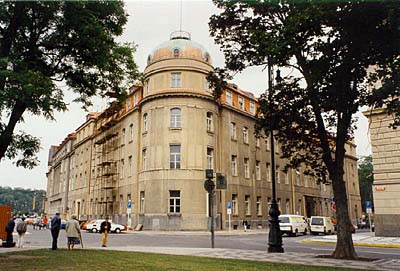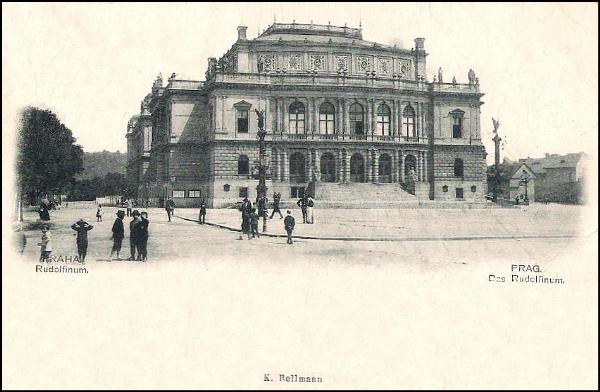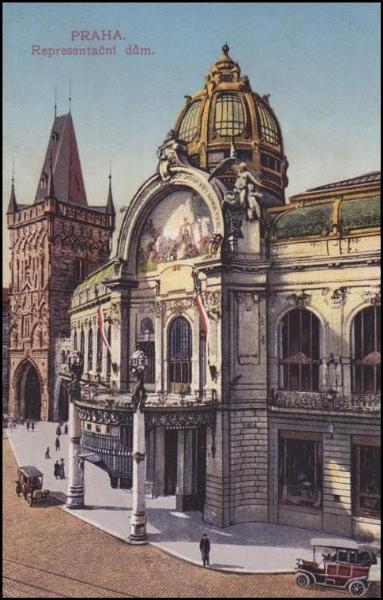"I have my own particular sorrows, loves, delights; and you have
yours. But sorrow, gladness, yearning, hope, love, belong to all
of us, in all times and in all places. Music is the only means
whereby we feel these emotions in their universality."
AUTHOR: H. A. Overstreet
yours. But sorrow, gladness, yearning, hope, love, belong to all
of us, in all times and in all places. Music is the only means
whereby we feel these emotions in their universality."
AUTHOR: H. A. Overstreet
MEANING OF THE QUOTE:
"Although each person is unique what unites us are
the emotions we all share and can feel through music."



"Although each person is unique what unites us are
the emotions we all share and can feel through music."
 |
| http://www.thecultureconcept.com/circle/the-culture-concept-circle-october-2012-musenews-editorial |
STRING QUARTET NO. 1
IN A MAJOR OP. 2
Prager Quartet
I. Andante - Allegro 0:00
II. Adagio affettuoso ed appassionato 17:21
III. Allegro scherzando - Trio 29:47
in A major is a one of the 21-year-old Dvorak's
highly accomplished early attempts at compos-
ing chamber works and it was the first of
Dvorak's series of fourteen string quartets.
The composition was dedicated to the
director of the Prague Conservatory,

Josef Krejčí, who was Dvorak's teacher of
music theory at the Prague Organ School.
 |
| Prague Organ School |
Antonin Dvorak began his musical career
not as a composer, but as a performer,
a violist, organist, and pianist. In these
capacities, the young musician was exposed
to a wealth of music and a huge variety of
musical styles: the Schubert- Mendelssohn-
Brahms strain of Germanic music, and the
Lisztian-Wagnerian strain, French opera,
Italian opera, Czech folk music, and more.
According to music critic David Hurwitz,
soaking up inspiration wherever he found it
and melding it into his own idiom."

Studying Dvorak's first compositions is
sort-of a history of his musical evolution
as a composer; how he melt all the elements
he was soaking up. Some of Dvorak's
earliest chamber music pieces are nearly
Mozartean in their classicism, others
thoroughly Wagnerian in their chromaticism,
while still others sound more like Schubert
and Mendelssohn than anything else; at the
same time it can be heard that there is not
always a complete mastery of the materials
at hand. When it comes to Dvorak's later
compositions, the mastery is evident; though
there is stylistic variety, everything sounds
like Dvorak, and all is skillfully crafted.
The original version of the first quartet is an
interesting case, a combination of youth and
mastery. This piece was written after he had
just avoided being drafted into the Austrian
army and was thrilled about it; so much
so that he even wrote about it upon
the score of this quartet:
"Thanks be to God! Composed in 1862, in March
after the call-up of conscripts. Ant. Leop. Dvorak,"


This joyful exuberance is also expressed
in the character of his music. He attempts to
move away from the restrictions of typical
Classical forms by using a quotation from the
introduction of the first movement and repeat-
ing it in the final movement near the very end
of the finale as an endeavor to unify the entire
piece. This is a Mendelssohnian technique
which Dvorak would make his own. Also, in the
trio of the scherzo, Dvorak does something for
the first time which would later become very
alternating between duple and triple meter.
However, Dvorak's youthful (21-year-old)
inexperience shows through in the work's
extreme length: this original version being
full of extra modulations and wander-
ings that may often be found in any
young composer's writing.
Like many of Dvorak's works from his earlier
days, when the young and still inexperienced
composer was openly responding to stimuli
from his musical surroundings and excitedly
adopting new compositional techniques,
this one lay forgotten (and un-
published) for a long period.
In 1887, at age forty-six, about twenty-
five years after first composing this, when
planning to have some of his early works
performed, Dvorak decided to rework this
long forgotten quartet into the version
which is nearly always performed today.
For this version he revised the quartet,
radically shortening it by removing a good
deal of what he considered the unnecessary
"filler" in the original version by cutting the
outer movements by a quarter and the sec-
ond movement by a whole third. Retain-
ed from the original version is a long
breathed Schubertian lyricism, beautifully
idiomatic string writing, and moments
that would feel perfectly at home in a
Mendelssohn string quartet.
FELIX MENDELSSOHN
SYMPHONY NO. 3 "SCOTTISH"
Movement I:
Andante con moto -
Allegro un poco agitato
Riccardo Muti, Conductor
New Philharmonia Orchestra
and points out Dvorak's use here
This scale, which appears in the
"American" Quartet, is usually ex-
plained in that work as the influence
of Native American music however its
appearance in this early quartet, written
long before Dvorak came to America,
would seem to suggest otherwise as much
of the folk music that the composer
was exposed to and influenced by
from his own country was built
upon a pentatonic melodic structure.
No actual performance of this concerto
has been documented until 1888, when
the revised version of the work was
included on the program for a concert
organized by the artists' association
Umělecká Beseda Arts Discussion
Group/Forum: an artistic association
which has brought together many
famous Czech artists since 1863)
at the Rudolfinum in Prague
has been documented until 1888, when
the revised version of the work was
included on the program for a concert
organized by the artists' association
Umělecká Beseda Arts Discussion
Group/Forum: an artistic association
which has brought together many
famous Czech artists since 1863)
at the Rudolfinum in Prague
 |
Rudolfinum in Prague
|
on January 6, 1888. The performers were
members of the orchestra of the National
Theatre: violinist Karel Ondříček,
(orchestra leader and younger
brother of the violinist František
Ondříček), violinist Jan Pelikán,
violist Petr Mareš, and cellist
Alois Neruda (brother of violinist
 |
| Josef Bohuslav Foerster (1859-1951) |
wrote of his impression of the work in the
Czech daily newspaper (a newspaper
published between the years
1861-1941) Narodni listy:

"This quartet is the product of a fresh imagination and
confidence in the use of musical form; however, in a few
places, we did sense the diffidence of the juvenile composer."
This was the only opportunity Dvorak ever had
to hear this work for the next performance took
place almost thirty years later, on October 29, 1917
(Dvorak died in 1904) in Obecni dum in Prague.
 |
| Obecní dům (1917) |
This quartet was not published until 1948.


LINKS
http://www.gutenberg.us/articles/string_quartet_no._1_(dvo%C5%99%C3%A1k)
http://honoluluchambermusicseries.org/concert/zemlinsky-quartet/

http://honoluluchambermusicseries.org/concert/zemlinsky-quartet/











